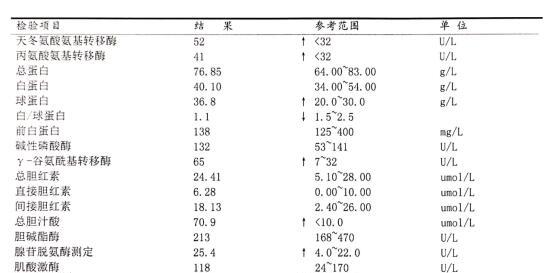In recent years, with the gradual improvement of people's living standards, the enhancement of health awareness, and the universality of physical examinations, more and more people have found elevated transaminases during physical examinations. Some people are very nervous and seek medical treatment everywhere, and some people do not see the doctor in time, delaying treatment, resulting in aggravation of the disease. The reporter interviewed The reporter interviewed The director of the infection (liver disease) of Jiangsu Provincial Hospital of Traditional Chinese Medicine, Ke Qiaofei, talked to everyone about the abnormal liver function found by the physical examination, what to do?
First, correctly understand the liver
The liver is located in the right upper quadrant, hidden behind the ribs, weighing about 1500g, it is the "labor model" in our body, because it has a wealth of functions: hematopoiesis, blood storage, regulation of circulating blood volume; detoxification, metabolism; secretion of bile; immune defense.
The liver plays an important role, the normal operation of the human body can not be separated from it, but it is also easy to get sick, often affected by the surrounding environment, maybe a virus, maybe a drug, maybe a meal of liquor, maybe long-term sleep disorders, can lead to it abnormalities. Therefore, it is a brave warrior, but it is also very "delicate".

Second, how to interpret the liver function test list
Liver function tests are common in physical examinations for alanine aminotransferase (ALT), aspartate aminotransferase (AST), alkaline phosphatase (ALP), r-glutamyltransferase (GGT), total bile acids, and total bilirubin. Abnormal liver function outcomes are primarily reflected in hepatocyte damage, cholestatic injury, and hyperbilirubinemia alone. Elevated levels of transaminases (ALT, AST) reflect hepatocyte injury, while abnormal cholestasis markers such as ALP and GGT reflect impaired bile salt and bilirubin transport and intrahepatic or extrahepatic bile duct injury. Elevated bilirubin levels can be observed both for hepatocyte injury and cholestatic injury, and if elevated transaminases levels are associated with elevated bilirubin levels, cholestatic hepatitis is suggestive.
Third, abnormal liver function is found, transaminases are elevated, what should be done?
Liver disease is a hidden disease, often overlooked, because "no pain, no itch, does not affect life", when the vast majority of liver disease, when uncomfortable, is more serious. However, when it is first found that the aminotransferase is elevated, there is no need to panic too much, because most liver diseases can be prevented, treated and controlled.
Further investigations are needed to determine the cause is key, and the infection department is selected.
Blood testing: viral indicators (5-10 species), autoantibodies, blood glucose, blood lipids...
Imaging: ultrasound B (fatty liver, chronic liver injury, liver fibrosis, early cirrhosis); CT (mass, vascular liver disease); magnetic resonance (bile duct, pancreatic duct, fat determination, mass). Different imaging tests have their own special significance, and when choosing, they can be selected according to the doctor's advice.
4. What are the common causes of abnormal liver function?
1) Viral hepatitis
2) Drug-induced liver injury
3) Autoimmune liver disease
4) Steatohepatitis (alcoholic and non-alcoholic)
5) Cholecystitis and gallbladder stones
6) Tumors (liver, gallbladder, pancreas, etc.)
7) Other possible causes (e.g., hyperthyroidism, diabetes, etc.)
5. What should I do if I encounter unexplained liver dysfunction?
Since the establishment of the Department of Infectious Diseases of Jiangsu Provincial Hospital of Traditional Chinese Medicine, it has long been committed to the diagnosis and treatment of various liver diseases, difficult and miscellaneous diseases, fever to be investigated, and its diagnosis and treatment of liver diseases reflects the advantages of the combination of traditional Chinese medicine and Western medicine, and has been rated as a key discipline of the State Administration of Traditional Chinese Medicine. The detection methods of Western medicine, the clear diagnosis, and the use of traditional Chinese medicine make the treatment of diseases more convenient. Among them, liver aspiration biopsy has brought good news to many patients with unexplained liver damage since the introduction of liver biopsy, and a definitive diagnosis is the first step in the treatment of the disease, so the secret under the microscope is opened, and the small cells can reveal the nature of the disease.
For all diseases, a definitive diagnosis is the first step. Therefore, liver puncture plays an indispensable role in the diagnosis and treatment of liver disease.
Sixth, the treatment of liver disease, traditional Chinese medicine treatment has advantages
Traditional Chinese medicine has advantages in the treatment of chronic liver disease, which can enhance the body's immune function, improve symptoms such as chronic liver disease fatigue, flank pain, nacha, diarrhea, etc., anti-liver fibrosis, and at the same time can be combined with Western medicine to improve response, reduce adverse reactions, and play a role in both symptoms and root causes.
At the same time, traditional Chinese medicine has an irreplaceable role in the treatment of cirrhosis ascites and liver cancer.
Experts suggest that abnormal liver function can not be ignored, clinical symptoms are often atypical, treatment needs to be timely, thorough, if necessary, long-term adherence to treatment, with traditional Chinese medicine treatment, the effect is good. For patients with chronic liver disease, it is necessary to do systematic testing and regular follow-up in outpatient clinics every three months.